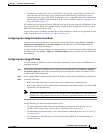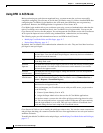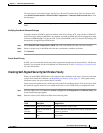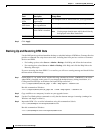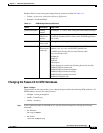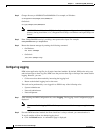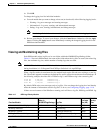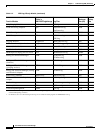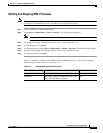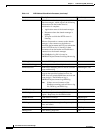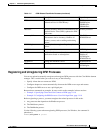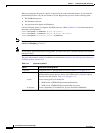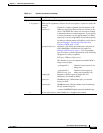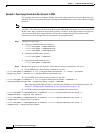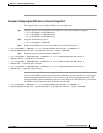
11-17
User Guide for Device Fault Manager
OL-11390-01
Chapter 11 Administering DFM (Advanced)
System Administration
-r process (continued from previous page)
-f “arguments” DFM-specific arguments, enclosed in one set of quotes. arguments can be the
following:
--accept
host1,host2...
(Optional.) Comma-separated list of hostnames or IP
addresses specifying clients which can connect to the
server. (The DFM server does not use reverse lookups
to determine names of connecting hosts. If you specify
a client as hostname, be sure the hostname is in DNS,
especially if you are using DHCP. If you want to specify
localhost, use the hostname or IP address, not localhost;
refer to Example 1: Specifying Clients that Can
Connect to DFM, page 11-18.)
--privopen=open-list (Optional.) Specify the privileged ports and protocol
which DfmBroker or DfmServer may open (see
Working with Firewalls, page 11-2, for an example).
open-list can be a comma-separated list ofthe following
(IP:protocol is always required):
TCP:port, UDP:port, IP:protocol
The defaults for open-list depend on whether DFM is
using a reserved port:
--privopen=IP:1 Default if reserved port is not
being used.
--privopen=IP:1,
UDP:reserved_port
Default if reserved port is
being used (normally 162).
--ouptut=file (Required.) Name of process output file. For
DfmServer, file should be DFM.
--port=port (DfmBroker only.) DFM broker port. port should
always be 9002.
--restore=file (DfmBroker only.) Restore broker state from backup
file. file should always be:
--restore=NMSROOT/objects/smarts/conf/broker.rps
-n Do not restart process when DfmServer is stopped and restarted.
Table 11-4 Options to pdcmd (continued)
Option Description and Arguments



